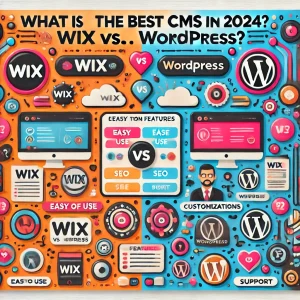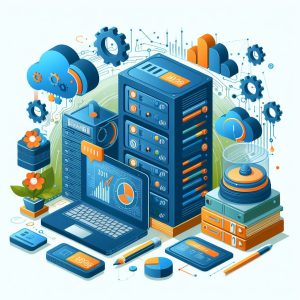 No doubt the Internet of Things needs no introduction here given how the latest big wrinkle in the application of World Wide Web-based technology has become so integrally involved in both our private and working lives. As it stands currently, working with IoT applies to some businesses more than others, but it’s fair to say that any of them that put a premium on customer accessibility and control will need to be adhering to IoT realities.
No doubt the Internet of Things needs no introduction here given how the latest big wrinkle in the application of World Wide Web-based technology has become so integrally involved in both our private and working lives. As it stands currently, working with IoT applies to some businesses more than others, but it’s fair to say that any of them that put a premium on customer accessibility and control will need to be adhering to IoT realities.
Here at 4GoodHosting, we’re a good Canadian web hosting provider like any other in that we prefer to keep our thumbs on the pulse of certain trends in the greater industry more so than others. IoT is definitely one of them, and it continues to be interesting to watch how it reaches further into our digital world every day. Consumers are going to expect more and more ‘smartness’ from their ‘things’ going forward, and businesses of course need to be receptive to that.
This makes choosing the right IoT platform a complex endeavor. The landscape can be confusing for IoT hobbyists, experienced developers, and senior executives alike. Today we’ll give you a quick overview of the IoT platform landscape and how you should evaluate IoT platforms based on your needs.
Defining an IoT Platform
Quite simply, an IoT platform is an integrated service offering what’s needed to bring physical objects online. Supporting millions of simultaneous device connections is the challenge, and your platform needs to allow you to configure your devices for optimized communication between machines. The consensus among developers is that it’s really quite difficult to build a well-functioning IoT product.
IoT Platform Types
End-to-end IoT Platforms
End-to-end IoT platforms provide hardware, software, connectivity, security, and device management tools to handle the massive numbers of concurrent device connections. They also provide all managed integrations needed, which can include OTA firmware updates, device management, cloud connection, cellular modem and more, all of which connect and monitor a fleet of devices online.
Connectivity Management Platforms
These platforms offer low-power and low-cost connectivity management solutions via Wi-Fi and cellular technologies. Connectivity hardware, cellular networks, and data routing features are all part of connectivity management platforms in IoT.
IoT Cloud Platforms
Cloud platforms are very beneficial, serving to get rid of the complexity of building your own complex network stack and offering backend and other services to monitor and track millions of device connections that are occurring simultaneously.
Data Platform
As you’d imagine, every type of IoT platform deals with data in some way. IoT data platforms serve the function of combining many of the tools you need to manage / visualize data analytics and them route them as needed.
IoT Platform Verticals
Placing these IoT platforms into categories is really being too simple with them. The breadth of functionality for each makes it so that they don’t fit into a single category. The most logical way of looking at them is what they offer for different interests and related users:
Hobbyists / Prototyping Solutions / Utilities / Live Search (A.I.) Applications / Development Kits / DIY solutions / Consumer Electronics / Home automation / Wearables / Industrial IoT (IIoT) Solutions / Smart factory warehousing applications / Predictive and remote maintenance / Industrial security systems / Asset tracking and smart logistics/ Transportation monitoring / Energy optimization / Connected logistics / Agriculture Industry / Healthcare Industry / Energy Industry / Smart Cities
What to Look for When Examining Platforms
It’s definitely helpful to know what you should be looking for, based on your intended solution:
- Connectivity
How effectively is the vendor’s network coverage fitting your business’ current and future initiatives?
- Method of Connectivity
What type of connectivity is needed? Will a Wi-Fi or cellular solution be best for your IoT product? Assess these needs and then determine how the vendor can address them.
- Market Longevity
Looking at how long the IoT platform been in business is helpful. The space itself is relatively new, but building has occurred quickly and a lot can and will change in a very short period of time. Aim to find an IoT platform that has been offering services for 4+ years at a minimum.
- Type of Service
How does the IoT platform describe and sell themselves? Some will be purely connectivity platforms, some will be end-to-end solutions that offer hardware and software to go along with connectivity. How one will suit you best comes about after assessing your business needs. How will they change over time?
- Geographic Coverage
Is an embedded sim with global support provided? Is this IoT platform one that covers the regions your business needs? Looking over all aspects of your global reach needs should be part of the consideration as well.
- Data Plan
Is a fair data plan included with the platform? The ability to pause or suspend your data services at any time and the ability to control how much data that is used should be on your checklist.
- Security / Privacy
Look into the platform and specifically how they’ve dealt with security and privacy issues and reviewed their security content as needed to date. Evaluate how their platform combats security issues frees you from having to do that yourself.
- Managed Integrations / API Access
How does the vendor integrate every complexity required for the IoT connectivity you’re after – cellular modems, carrier / sim cards, device diagnostics, firmware updates, cloud connections, security, application layer, RTOS. The best ones will consolidate all into a simple package that works out to very little of it ending up on your plate.
- Data Access
How easy does it look to be to take the data acquired through the IoT platform and then integrate it with your enterprise back ends and current cloud service? How will this data then be used? Does the service match those needs?
- IoT Ecosystem
The relationships between the services the IoT platform offers should be clearly understood. This will help you learn how their services can be of assistance in helping you build your product
- IoT Roadmap
The expansion of IoT platforms is going to continue ahead at full steam. Does this IoT platform’s roadmap match your organization’s needs, and will expansions into connectivity, data, and hardware be helpful for you?
- OTA Firmware Updates
How does the vendor allow you to send updates and fix bugs on your devices remotely? It is a simple process, or a complex one. Obviously, simpler is far preferable.
Good Ones
- Particle — Particle is an enterprise IoT platform that’s ideal for building an IoT product, from Device to Cloud.
- Salesforce IoT — Maximizes your business efforts with IoT cloud services.
- Microsoft IoT Azure — Very popular, and enhances operational productivity and profitability by means of a preconfigured connected factory solution.
- Artik Cloud — The ARTIK IoT platform is ideal for IoT open data exchange
- Google Cloud’s IoT Platform — integrated services that get high marks from end users and allow you to easily and securely connect, manage, and internalize IoT data
- IBM Watson IoT — IBM’s new Watson Internet of Things (IoT) is a cognitive system that picks up on AI and then practicalizes it for use within IoT functionality.
- Xively Platform — an enterprise IoT platform to help accelerate your connected product or service.
These are just a few of many that seem well-received by developers.













